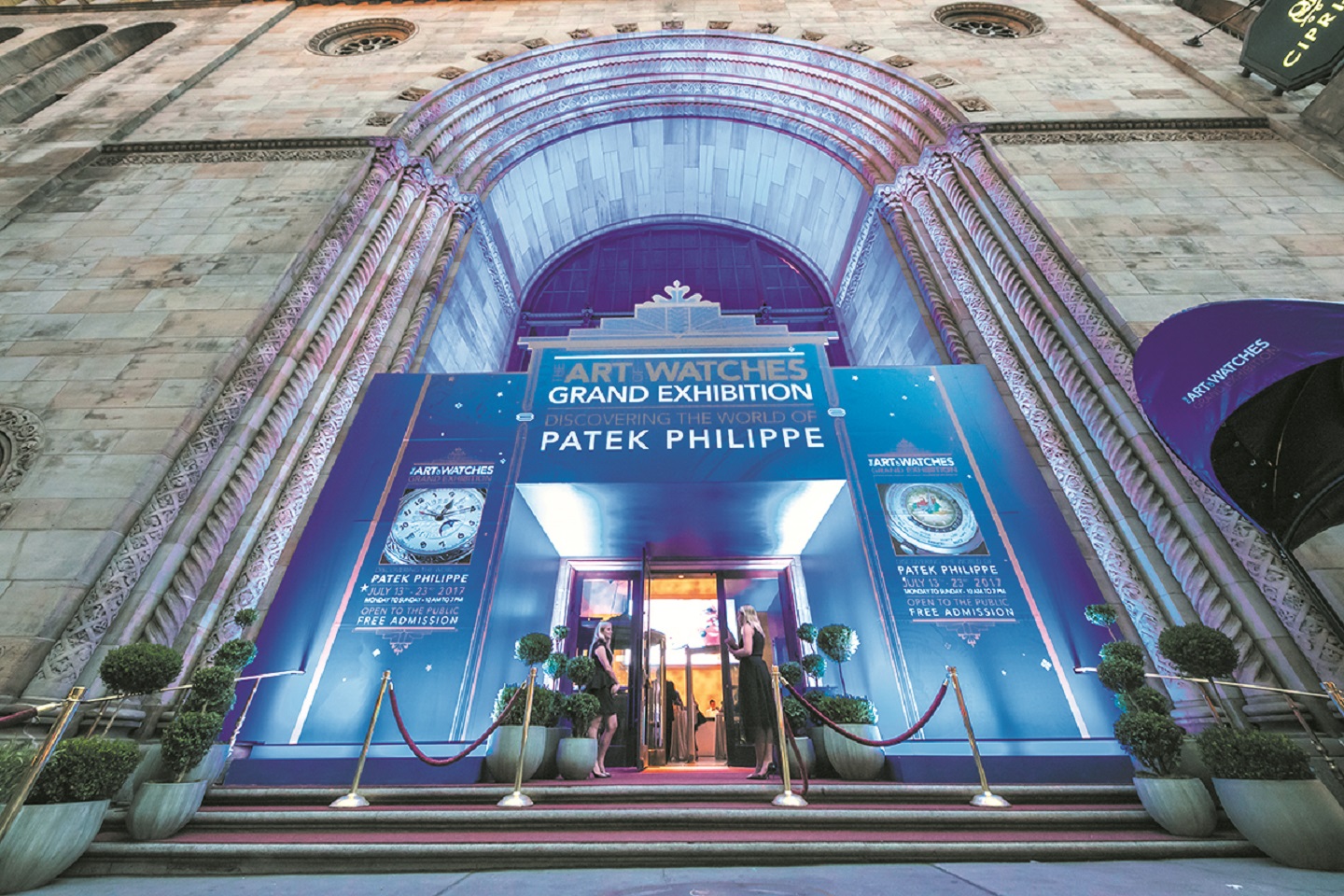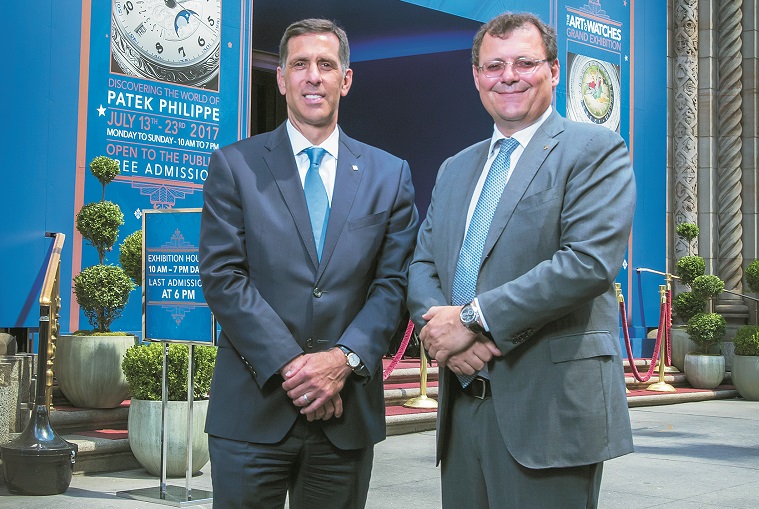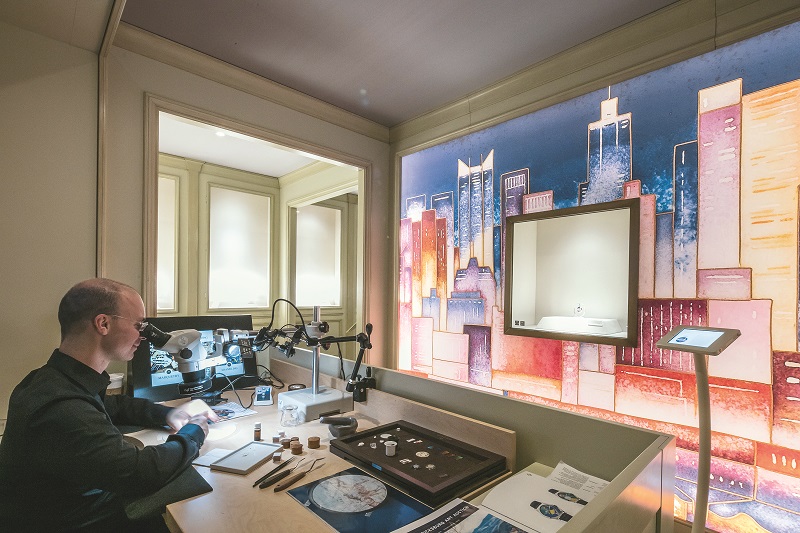
Ten magical days in July, 27,449 visitors and over 450 watches shown in a 1,220 sq m space — Patek Philippe’s The Art of Watches Grand Exhibition New York 2017 was nothing if not a resounding success, and got New Yorkers talking about the event for weeks afterwards. Within the grand interiors of the iconic Cipriani on 42nd Street, Patek Philippe — one of the last family-owned Genevois watch companies — organised a most breathtaking public exhibition that showcased the manufacture’s tradition of high-precision watchmaking and gave an insight into the company’s 178-year history and its heritage in the domain of haute horlogerie.
Founded in 1839 in Geneva, Patek Philippe shares a long and interesting history with the US, beginning when co-founder Antoine Norbert de Patek travelled stateside from Switzerland in 1855. He secured the illustrious firm Tiffany, Young & Ellis as Patek Philippe & Co’s official agent.
In 1932, Patek Philippe was acquired by the Stern family. A little more than a decade later, in 1946, Henri Stern founded the Henri Stern Watch Agency in New York as part of his responsibility to manage the distribution of the company’s timepieces in the US market. Henri returned to Switzerland in 1958 and took over from his father to become the company’s president. His son Philippe joined the family-run firm soon after, becoming general manager in 1977.
Today, it is Philippe’s son, Thierry, who is Patek Philippe’s president. Here’s an interesting anecdote — it became tradition for members of the family to train at Patek Philippe’s New York office, which Thierry also did, so New York has both a personal and professional connection to him.
“New York was a logical choice for the US Grand Exhibition, as this was one of the first landing spots for Patek and Philippe in the 1800s when they began to explore the new world,” says chatty and warm Larry Pettinelli, Patek Philippe’s president for the US. “We are tremendously proud to have been allowed this rare opportunity to educate the public, not only about Patek Philippe but also the historical significance of timekeeping through the ages.”

“It took two years of preparation and it was interesting to see the result — I am very proud of how the exhibition has turned out. Yes, it would be nice if it was longer, but good things are often like this,” Thierry adds with a smile. “I am very proud that American visitors are able to learn more about the historic and contemporary ties between our company and the American market.”
Within Cipriani’s rich and opulent space — truly, no other location in New York had quite the same gravitas for an event like this — a two-storey structure hosted 10 thematic rooms that brought to New York a taste of Patek Philippe’s particular brand of heritage, luxury and craftsmanship.
The exhibition began at the Film Theatre room, where a film on the history of the brand was screened. Next door, in the Current Collection room, the brand’s recent collection was displayed in a space designed to replicate the Patek Philippe Salon along the Rue du Rhone in Geneva. Within the Napoleon Room, where limited edition timepieces created specifically for the US market were showcased, viewers had the chance to experience the exact view of Lake Geneva that they would see if they were at the salon.
The Museum Room, structured much like the Patek Philippe museum in Geneva, was divided into two sections — the Antique Collection (1600s to 1900s) presented some of the greatest historical timepieces of the last five centuries, while the second section highlighted historical Patek Philippe timepieces dating back to the brand’s inception in 1839.
In the Rare Handcrafts Gallery and the Watchmakers room, craftsmen from Geneva showcased the painstaking skills required to bring Patek Philippe watches to life. In the former, artisans demonstrated the techniques used to decorate enamel timepieces and dome clocks, while in the latter, master watchmakers took viewers on an exploration of the inner workings of mechanical timepieces.

The Rare Handcrafts Gallery was Thierry’s favourite. “I like the rare handcrafts. I grew up with a passion for enamelling and engraving — there are so many secrets associated with these crafts. It’s so beautiful to me because it’s about dreaming, creativity and pleasure, not business,” he smiles.
The Grand Complication and Movement Rooms allowed viewers a rare glimpse of Patek Philippe’s most complicated and innovative timepieces. They also allowed visitors to immerse themselves in the technical prowess required to construct the watchmaker’s many movements. These range from the more basic calibres to the movements created for some of the most complicated timepieces in the world.
The US Historic room, specially created to showcase significant timepieces from historic collectors, was easily one of the favourites of the exhibition for its absolutely fascinating displays, teeming with personality and pedigree. It was also the most important room in the exhibition because it gave context to Patek Philippe’s relationship with the US, putting actual watches and their owners in the spotlight.
One of the most Instagrammed exhibits from this room was likely a quartz Patek Philippe desk clock that one of the US’ most well-loved presidents, John F Kennedy, kept in the Oval Office. The piece of horological art was his for a few precious months before his tragic assassination. “We actually have the prototype of the clock in our museum, and we found out that the original was in the John F Kennedy Presidential Library & Museum, which is where it’s on loan from,” says Pettinelli.
Another watch that was quite popular was a chronograph from 1948 — one of Patek Philippe’s first — that was once owned by baseball legend Joe DiMaggio, who was also famous for his marriage and lifelong devotion to screen siren Marilyn Monroe. Other highlights included 11 timepieces owned by banker Henry Graves and automobile manufacturer James Ward Packard, with five from the latter, including the famous “The Packard”. The six from Graves, including a minute repeater grande sonnerie perpetual calendar from 1928, are usually exhibited in Patek Philippe’s Geneva museum.
At the end of the tour — which could take anywhere from an hour to three, depending on individual levels of interest — a café was a great way to complete the experience. A dedicated area for children, replete with an interactive watch-assembly game that was quite popular, was part of a holistic educational experience for the whole family.
“The purpose of a free and open event like this is to educate people,” Thierry says thoughtfully. “What I hope is that when people come for this, they will understand the difficulty of creating a high complication watch. Maybe they can’t buy a Patek Philippe today, but in the future, they might. And at that time, they will remember Patek Philippe.”


